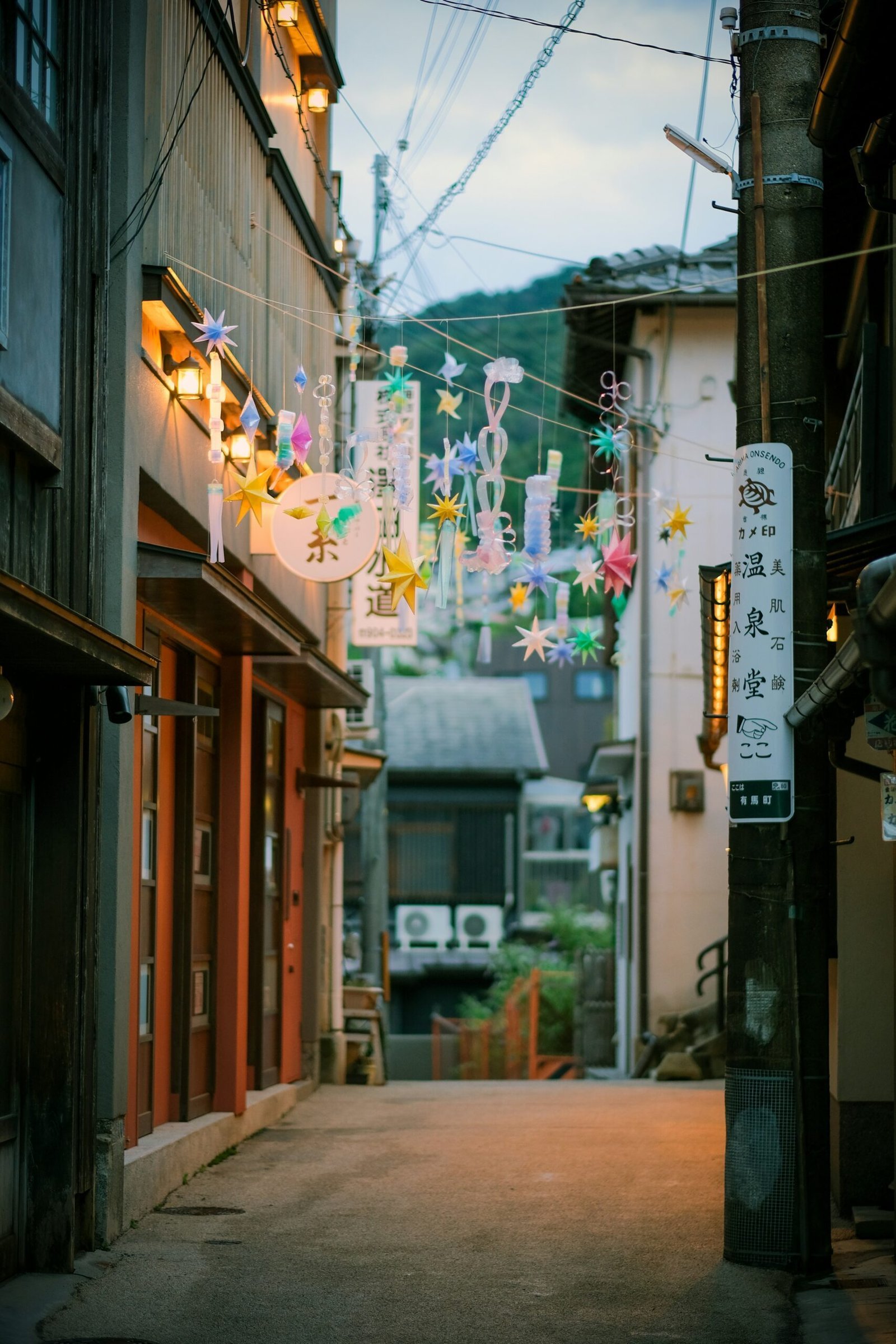
Introduction to Onsen Culture in Japan
Onsen, or hot springs, are an integral part of Japanese culture, deeply rooted in history and tradition. These natural hot springs are heated by geothermal activity, offering a unique blend of relaxation and therapeutic benefits. The history of onsens dates back centuries, with the earliest records from the Nara period (710-794 AD), showcasing their long-standing significance. Through the years, they have been renowned for their healing properties, often attributed to the mineral-rich waters that can alleviate various ailments.
Visiting an onsen is more than just a bath; it is an immersive cultural experience that embodies Japanese customs and etiquette. Central to the onsen experience is the emphasis on cleanliness. Prior to entering the communal bath, visitors are required to thoroughly wash themselves at designated shower areas. This practice ensures that everyone can enjoy the pristine waters without any contamination. Additionally, bathing is done without swimsuits, maintaining the purity of the water and fostering a sense of communal harmony.
The communal aspect of onsens cannot be understated. It is a place where individuals can relax together, often in tranquil natural settings that promote social bonding and mental repose. The etiquette extends to maintaining a peaceful atmosphere, where talking softly and respecting the privacy of others are paramount.
There are various types of onsens catering to different preferences. Rotenburo, or outdoor baths, provide a serene setting under the open sky, often surrounded by nature, enhancing the calming experience. Sento, or public baths, can be found in urban areas, serving as communal hubs for relaxation and socialization. For those seeking privacy, private baths are available, offering a secluded retreat while still providing the therapeutic benefits of hot spring waters.
The onsen culture in Japan is a testament to the deep connection between the Japanese people and their natural environment. It reflects a harmonious balance between tradition and modernity, inviting visitors to partake in a timeless ritual of relaxation and rejuvenation.
Top Onsen Towns to Explore
Japan’s onsen towns are a testament to the country’s rich cultural heritage and natural beauty, offering visitors a serene escape into traditional Japanese lifestyle and relaxation. Among these, a few towns stand out for their unique features and well-preserved history.
Beppu, a town on Kyushu Island, is arguably the most famous of all. Renowned for its eight distinct hot spring areas, collectively known as the “Beppu Hells,” this town boasts more than 2,000 onsen sources. Visitors can experience a variety of onsen types, from saltwater baths to mud baths, and even steam and sand baths. Beyond the onsen, Beppu offers attractions such as the scenic Beppu Park and the interactive Beppu Rakutenchi amusement park. The abundance of choices ensures that everyone finds a spring suited to their taste.
Hakone, situated closer to Tokyo, is not only easy to access but also provides an unparalleled view of Mount Fuji. This makes it a popular destination for those looking to experience an onsen with a breathtaking backdrop. Hakone is home to various ryokan (traditional Japanese inns) that offer private onsen baths, allowing visitors to soak in tranquility while gazing at one of Japan’s most iconic landmarks. Key attractions in Hakone include the Hakone Open-Air Museum, Owakudani volcanic valley, and scenic boat tours on Lake Ashi, all enhancing the overall experience of any onsen trip.
Kinosaki, located in the Hyogo Prefecture, is famed for its seven public onsen baths, all within walking distance of one another. Visitors can don traditional yukata robes and stroll along willow-lined streets, embarking on an onsen-hopping journey that dates back over a century. Each bath, such as the historic Satono-Yu and the picturesque Goshono-Yu, offers unique atmospheres and benefits. The town’s historical charm is augmented by attractions like the Kinosaki Onsen Ropeway and the serene Genbudo Cave, making it a well-rounded destination for immersing oneself in Japanese tradition.
These three towns, with their unique offerings and rich history, exemplify the variety and allure of Japan’s onsen culture, inviting visitors to discover the depths of relaxation and tranquility unique to Japanese onsen towns.
Health Benefits of Onsen Bathing
Regular onsen bathing offers a multitude of health benefits, primarily due to the mineral-rich waters that characterize these traditional Japanese hot springs. The serene environment and therapeutic properties of the waters make onsen bathing an effective method for relieving stress. The warm temperatures encourage relaxation, reduce tension, and foster a sense of tranquility that can alleviate the mental burdens of everyday life.
Beyond stress relief, onsen bathing is renowned for its capacity to soothe muscle pain and joint stiffness. The minerals—such as sulfur, calcium, and magnesium—dissolved in the water penetrate the skin, promoting relaxation and reducing inflammation. This makes onsens particularly beneficial for individuals suffering from conditions like arthritis or chronic muscle pain. The gentle buoyancy of the water further aids in easing physical discomfort by reducing the body’s weight and supporting natural movement.
Improved blood circulation is another notable health benefit offered by onsen bathing. The heat from the hot springs dilates blood vessels, facilitating better blood flow and oxygen delivery throughout the body. This enhancement in circulation can help in managing cardiovascular health, improving skin tone, and boosting overall vitality. Enhanced blood flow also supports the body’s detoxification processes, enabling more efficient removal of toxins and metabolic waste.
Furthermore, regular immersion in onsen waters can promote better sleep. The combination of physical relaxation and mental calm achieved during onsen bathing facilitates a deeper, more restorative sleep cycle. The balanced temperature and therapeutic minerals help to regulate body functions that contribute to a good night’s sleep, benefitting those struggling with insomnia or other sleep disorders.
Scientific studies have consistently supported these health benefits. Research published in the International Journal of Biometeorology, for instance, highlights the correlation between hot spring bathing and improved respiratory function, reduced stress levels, and alleviation of various pain syndromes. Testimonials from frequent onsen-goers echo these findings, with many individuals reporting significant improvements in their physical and mental wellbeing after regular visits to onsen towns.
Tips for Making the Most of Your Onsen Experience
Japan’s onsen towns provide an opportunity to embrace tranquility, but preparing properly can elevate the experience significantly. To start, pack essentials such as towels and toiletries—most onsen establishments provide small washcloths for washing up, but it’s advisable to bring your own larger towel for drying off. Some facilities offer basic toiletries, yet carrying your preferred products ensures comfort.
Understanding onsen etiquette is crucial to fully enjoy the serene atmosphere. Upon arrival, wash thoroughly from head to toe in the designated shower area before entering the bath. This practice not only maintains cleanliness but also demonstrates respect for fellow bathers. Additionally, keeping noise to a minimum fosters a peaceful environment; many people visit onsen to unwind and relish the quiet.
When it comes to relaxing, take your time. Onsen bathing is not merely about cleansing the body but also about soothing the mind and spirit. Start by immersing yourself slowly, allowing your body to acclimate to the hot water. Alternating between the hot onsen baths and cooler resting areas can help regulate your body temperature and enhance relaxation. Embrace the moment, breathe deeply, and let all stresses dissolve in the steam.
Observing local customs enriches your experience. Always respect communal areas by sharing the space considerately. For instance, tying long hair up prevents it from contaminating the water, and using the small washcloth on your head or beside you rather than in the bath maintains the purity of the soaking area. Nudity norms can differ; while Japanese onsen require patrons to bathe without swimwear, understanding and embracing this local practice will allow for a more authentic experience.
Visiting an onsen town is more than just a bath; it’s an immersion into Japanese culture. By preparing thoughtfully, observing etiquette, and savoring the moment, you can ensure a harmonious and memorable onsen experience.

